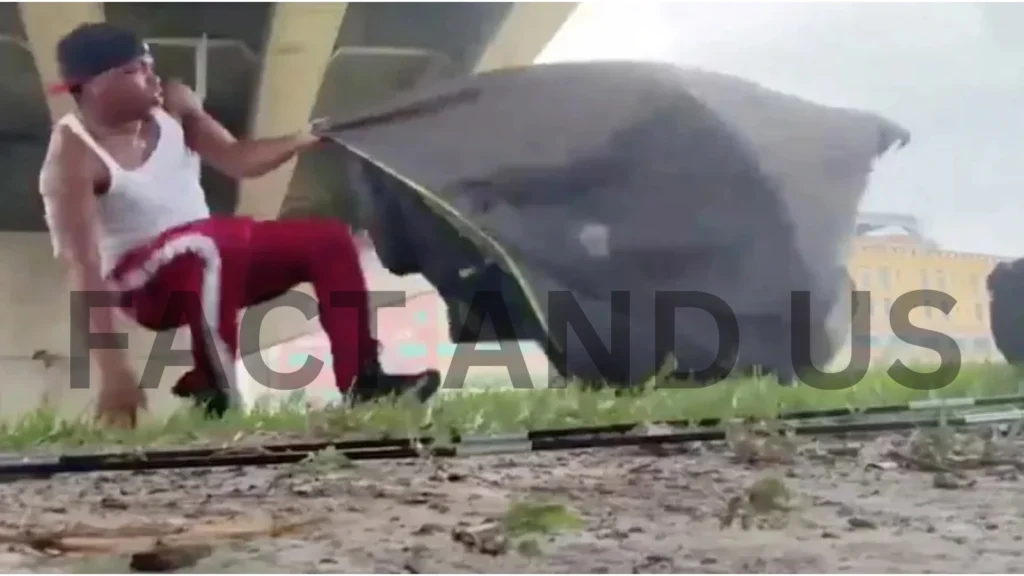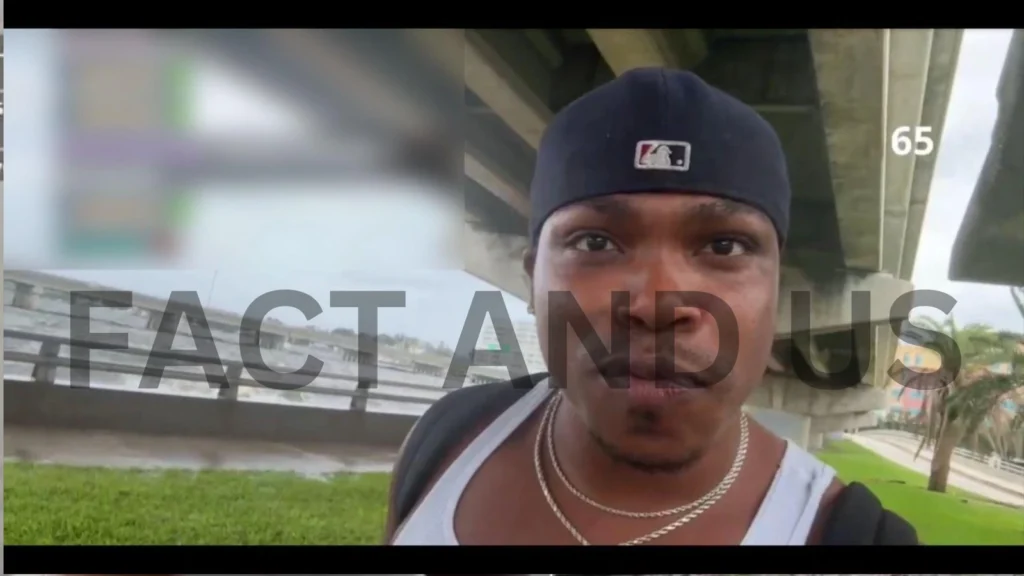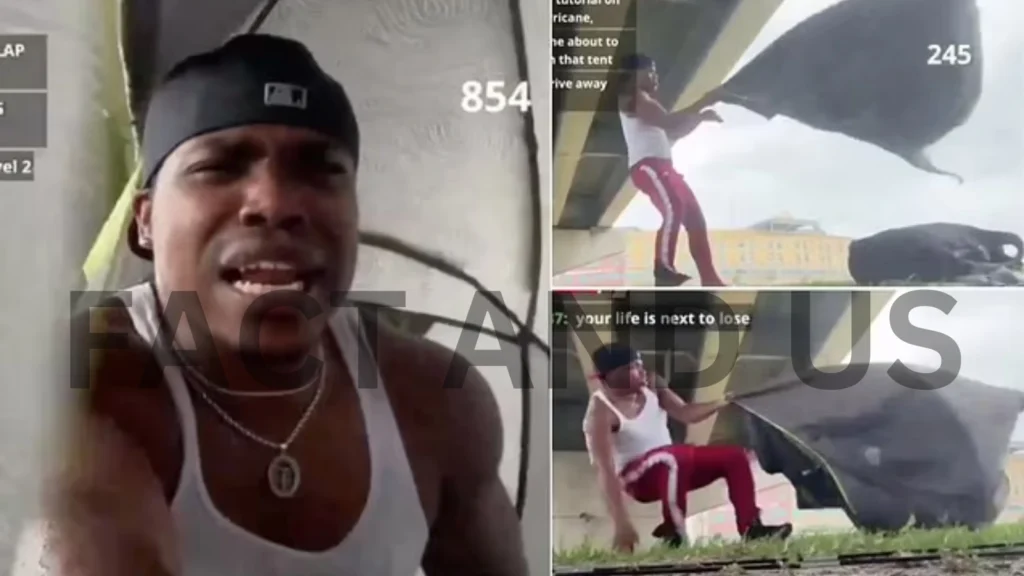While millions of people in Florida fled Hurricane Milton, Mike Smalls Jr ventured into the violent winds in Tampa, Florida, holding a blow-up mattress, an umbrella and a pack of ramen noodles. While millions of people in Florida fled Hurricane Milton, Mike Smalls Jr ventured into the violent winds in Tampa, Florida, holding a blow-up mattress, an umbrella and a pack of ramen noodles.

He went outside Wednesday evening as the storm pounded the US state and livestreamed on the platform Kick. He told his online audience if he reached 10,000 views, he would launch himself and his mattress into the water. Once he hit the threshold, he took the plunge. Then he got worried: “The wind started picking up and I don’t know how to swim…so I had to grab on to the tree.”
The area was under an evacuation order – meaning residents had been advised by local officials to leave their homes, for their own safety.Mike’s hour-long stream from Tampa Bay has more than 60,000 views on the streaming platform Kick, and has been seen by millions after being clipped up and posted on other social-media platforms, including X.
Live streaming – filming yourself in real time – has become increasingly lucrative for content creators looking to make quick money. But these streams can involve dangerous stunts, as content creators try to stand out in an increasingly competitive environment. Many people have criticised Mike’s behaviour on social media, suggesting he’s risking his life for clicks.
Contents
He made it safely – and told me he’d do the risky stunt again, “if the price is right”.


When asked about the backlash, he admits what he did was “controversial” and acknowledges that some might think he is risking not just his life, but the lives of those who might have to save him. But, he added: “From a content creator standpoint, people like to see kind of edgy things.”
‘The tornado was inside our house’ – Florida reels after Milton
‘It’s eerie to see its power’ – Florida woman documents 20 hours in hurricane’s path in messages to messages
Helene is deadliest mainland US hurricane since Katrina
The Tampa Police Department said in a statement: “Ignoring mandatory evacuation orders puts lives at risk. When individuals disregard these warnings, they not only jeopardise their own safety, but also create additional challenges for first responders who are working tirelessly to save lives.

“Intentionally placing oneself in harm’s way could divert critical resources and delay vital rescue operations for others.” Hundreds of people have died during this year’s hurricane season, which has devastated parts of the US south-eastern coast.
Millions had been forced to evacuate as Hurricane Milton, which at its peak was measured as a category 5 storm, made landfall on Wednesday along Florida’s Gulf Coast. At least 16 people have died in the storm, millions are still without power and thousands had to be rescued by first responders as water overtook homes.
Hurricanes Helene and Milton have bookended an exceptionally busy period of tropical weather in the US. In less than two weeks, five hurricanes formed – not far off from what the Atlantic would typically see during an entire year. Once he hit the threshold, he took the plunge. Then he got worried: “The wind started picking up and I don’t know how to swim…so I had to grab on to the tree.”
The area was under an evacuation order – meaning residents had been advised by local officials to leave their homes, for their own safety. Mike’s hour-long stream from Tampa Bay has more than 60,000 views on the streaming platform Kick, and has been seen by millions after being clipped up and posted on other social-media platforms, including X.

The Dark Side of Storm Chasing
But experts warn that this growing phenomenon is putting lives at risk, not just for the influencers themselves but also for others. By venturing into dangerous areas, these individuals are ignoring evacuation orders, clogging up emergency response efforts, and potentially endangering rescue teams who might have to save them if things go wrong.
“People think they’re invincible, but they’re not,” says a National Weather Service official. “In
Some influencers argue that they’re bringing awareness to the severity of natural disasters, but critics question whether the attention is truly about education—or just personal gain.
Financial Incentives
Social media platforms like YouTube, TikTok, and Instagram have monetization models that reward high engagement. Influencers who post dramatic hurricane footage often see a spike in views and subscribers, which translates into more money. Some go as far as ignoring safety warnings in pursuit of this short-term financial gain.
“Extreme content sells,” says a social media analyst. “These influencers are making thousands of dollars from just one viral video, and that’s enough motivation for so
The Growing
The problem has drawn the attention of local authorities and social media companies alike. In some cases, law enforcement has intervened, urging influencers to leave dangerous zones. Social media platforms, on the other hand, are being called u
While some platforms have implemented features to reduce misinformation during emergencies, content glorifying dangerous stunts has yet to be effectively regulated. Critics argue that platforms must take more responsibility in curbing this trend by restricting the monetization.
stay connected with fact and us for more such news.
